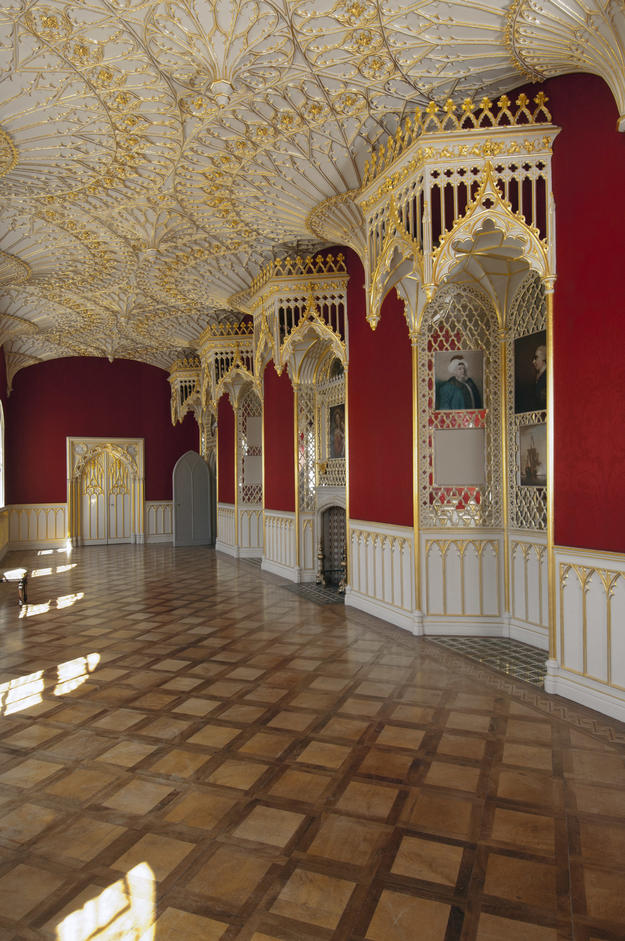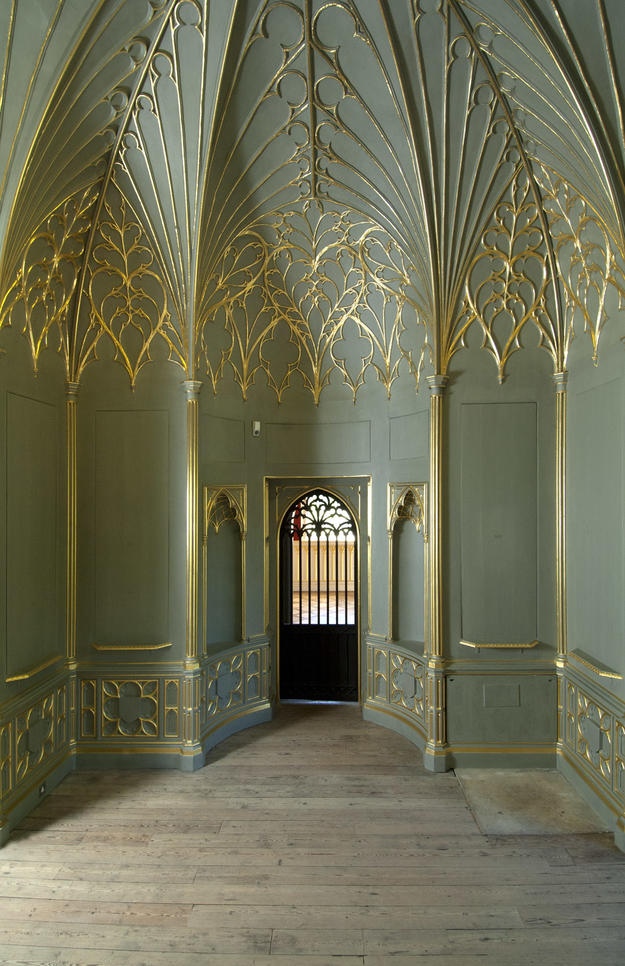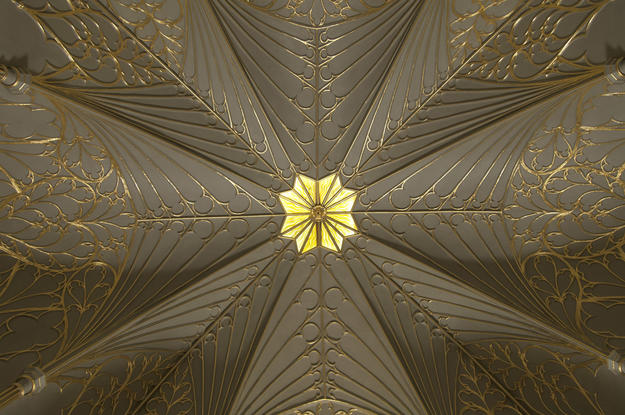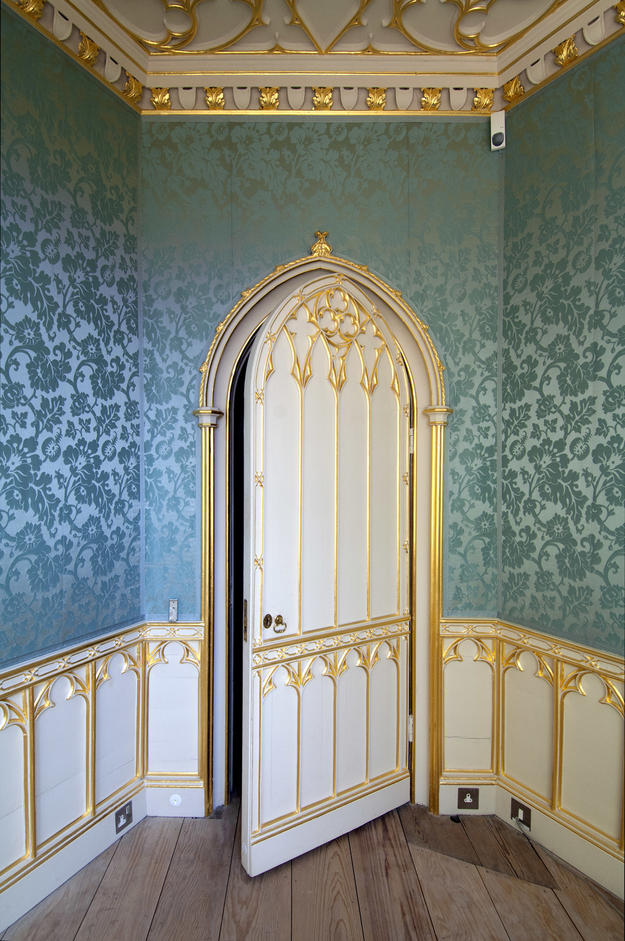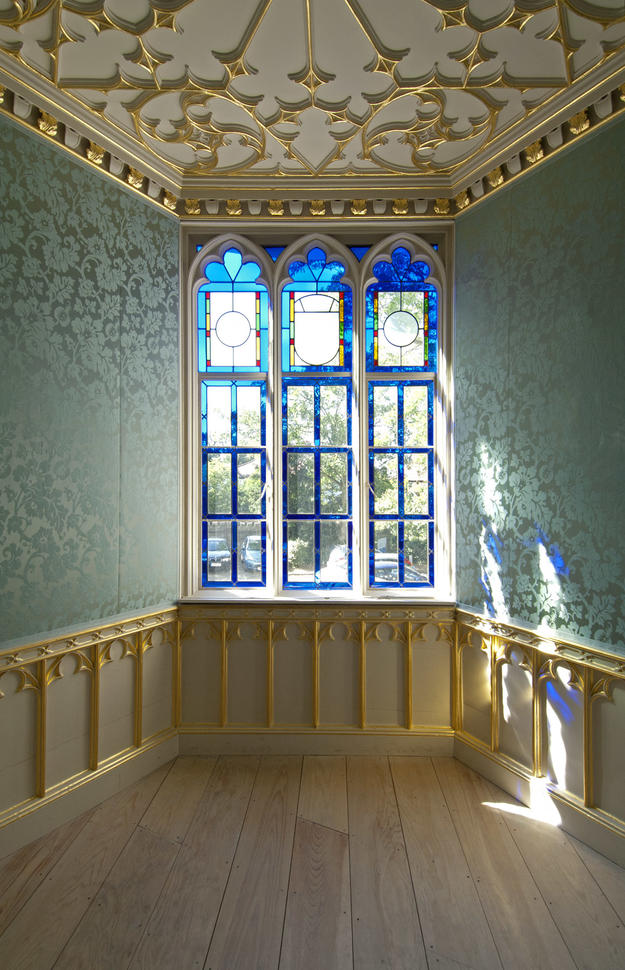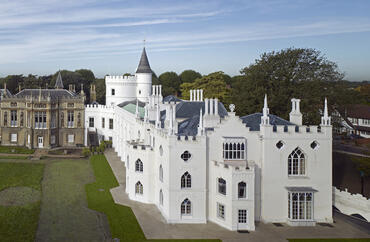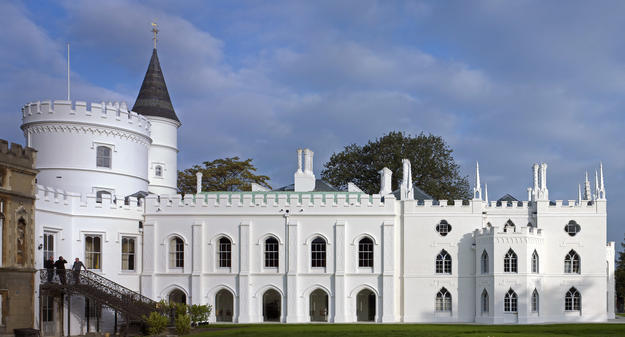Strawberry Hill
As the first Gothic Revival structure in Europe, Strawberry Hill seamlessly blended landscape design, architecture, and decorative arts to forge a new direction in eighteenth-century design and culture. The grounds and buildings, with their uniquely designed interiors, were the visionary project of writer Horace Walpole, the youngest son of Britain’s first prime minister. Strawberry Hill was designed to display his collections of fine and decorative art amidst rooms reflecting Gothic aesthetics and his fascination with materials. One of the astonishing touches in the decorative scheme is the inventive, and often deceptive, use of papier-mâché to render flourishes that could be mistaken for stone or wood architectural details. Although much of Walpole’s extensive collection was auctioned by his descendants in 1842 and the property sold to St. Mary’s College in 1925, the architecture and landscape of Strawberry Hill remained largely intact.
The return of the house to public enjoyment and access
Deterioration from lack of regular maintenance and incompatible new uses led to a significant conservation campaign undertaken by World Monuments Fund, World Monuments Fund Britain, the Strawberry Hill Trust, and other partners. Strawberry Hill was placed the 2004 World Monuments Watch and we became involved in research and planning at the site with support from the Samuel H. Kress Foundation and the Robert W. Wilson Challenge to Conserve Our Heritage. Emergency stabilization and repairs were addressed, and diagnostic testing and documentation were the basis for advanced training for students from the London Metropolitan University and the University of Pennsylvania. WMF Britain worked with the Strawberry Hill Trust to prepare a feasibility study for restoration of the house, its accessibility, interpretation to the public, and long-term stewardship. The work, completed in 2010, marked the return of the house to public enjoyment and access. In 2011, the Paul Mellon Endowment for British Heritage supported the conservation of the groves.
Thanks to Walpole’s personal records describing the work carried out at Strawberry Hill, and his letters to friends reflecting the evolution of his thinking about the rooms and their arrangement, the house is well documented. Horace Walpole was a chronicler of his social milieu, a historian, antiquarian, and collector. While at Strawberry Hill he wrote The Castle of Otranto, a novel and perhaps the work most identified with him today. The fame of the house, grounds, and collections were established by the Description of Strawberry Hill (1784), an enduring illustrated account meant to encourage public curiosity about the estate.
World Monuments Fund’s work at Strawberry Hill has been made possible, in part, by the Samuel H. Kress Foundation, The Robert W. Wilson Charitable Trust, and the Paul Mellon Fund for Architectural Preservation in Great Britain.

